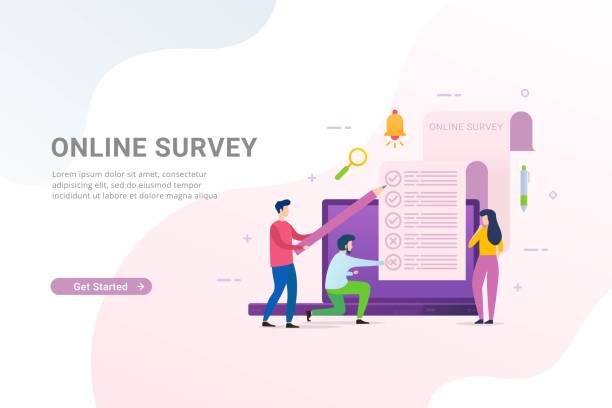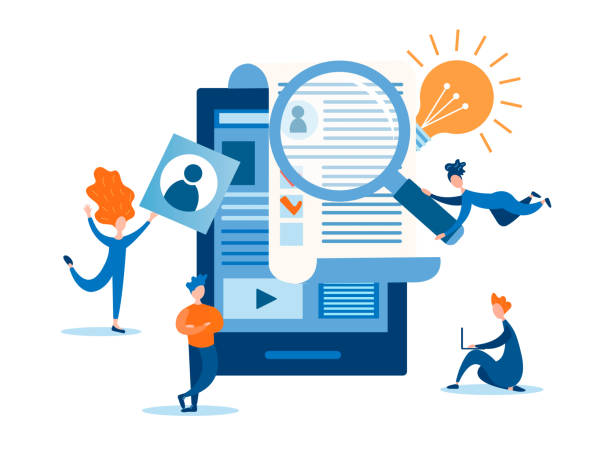Introduction to Personal Website Design and Its Importance
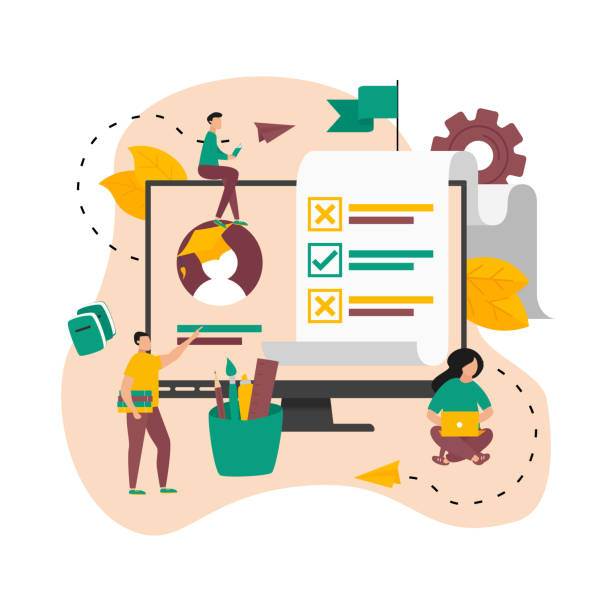
In today’s digital age, having a strong online identity has become more important than ever.
#Personal #website #design is not just a necessity, but a golden opportunity to introduce your skills, experiences, and interests to the world.
This personal platform is a powerful tool for creating a lasting personal brand and connecting with your target audience.
From an educational perspective, building a personal website allows you to share your knowledge and expertise, conduct training courses, or even publish your unique experiences in blog format.
This approach will be highly beneficial not only for you but also for others seeking information in your specialized fields.
Personal website design is not only a showcase for your professional resume but also provides a space for self-expression and creativity.
Have you ever thought about how you can transform your resume beyond a simple document into an interactive experience? A personal website gives you this opportunity.
This explanatory content shows you how, with proper planning and the right tools, you can significantly enhance your online presence.
On the other hand, thought-provoking content on your personal website can make audiences think and encourage them to interact more.
This website is an ideal platform for experimenting with new ideas and receiving direct feedback from your target community.
The importance of this online presence, especially in creative and independent industries, is immeasurable and paves the way for new career opportunities and collaborations.
Are you worried your company’s old website is driving away new customers? Rasaweb solves this problem with modern and efficient corporate website design.
✅ Increases your brand’s credibility.
✅ Helps attract target customers.
⚡ Contact Rasaweb for a free consultation!
Initial Steps in Personal Website Design from Idea to Implementation
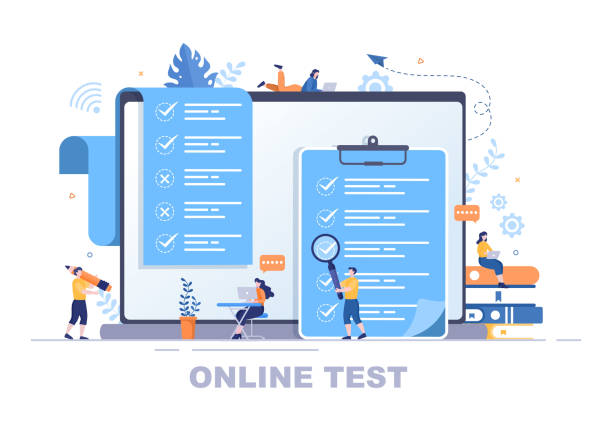
Starting the personal website design process requires meticulous, step-by-step planning.
The first step is defining your goal and primary audience.
Do you want to create an online portfolio for your artwork, or a specialized blog to share your knowledge? The answer to this question will determine your design and content path.
Next, it’s time to choose a suitable domain name.
Your domain name should be short, memorable, and relevant to your identity or activity.
For example, you can choose your name or a keyword related to your field.
The next step is choosing a reliable hosting provider.
Hosting is like a home for your website, storing its files and data and ensuring your website is always accessible.
The guidance content in this section includes key tips for choosing the correct domain and hosting.
It is recommended to go with providers that offer strong support and high uptime.
After acquiring the domain and hosting, it’s time to design the overall structure of the website.
This involves determining the main pages (such as About Me, Services, Portfolio, Contact Us, and Blog) and how they connect to each other.
A sitemap can help you visualize this structure.
Personal website design is not limited to technical aspects but also includes visual design and user experience (UX), which we will cover in later chapters.
Finally, the implementation phase involves uploading files and configuring initial settings, a process that can be much simpler with the right platform.
These steps provide a solid foundation for a successful online presence.
Choosing the Right Platform for Personal Website Design
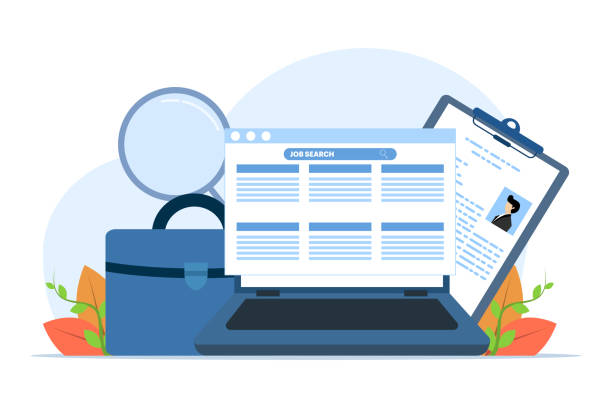
Choosing the right platform is one of the most crucial decisions in your personal website design journey.
This choice can determine the ease, flexibility, and costs associated with your website’s development and maintenance.
Various platforms are available for this purpose, each with its unique features and advantages.
Among the most popular options are Content Management Systems (CMS) like WordPress, Joomla, and Drupal, with WordPress being the top choice for many due to its high flexibility, large user community, and countless plugins.
This platform easily allows the creation of blogs, portfolios, online stores, and even corporate websites.
Other options include Website Builders like Wix, Squarespace, and Weebly, which allow you to create your website using drag-and-drop functionality without needing programming knowledge.
These options are suitable for beginners and those looking for a quick launch.
In contrast, website development with manual coding (HTML, CSS, JavaScript) is a more specialized method that offers unlimited flexibility but requires deeper technical knowledge.
A precise analysis of your needs and skills will help in choosing the best platform.
Personal website design can be accomplished using any of these methods, depending on your goals.
The table below will help you make a better decision:
| Platform | Advantages | Disadvantages | Suitable for |
|---|---|---|---|
| WordPress (CMS) | High flexibility, thousands of plugins and themes, large user community, SEO-friendly | Requires initial learning, user responsible for security and updates | Bloggers, small businesses, professional portfolios |
| Wix/Squarespace (Website Builder) | Ease of use, no coding required, beautiful templates, easy support | Limited flexibility, less control over code, monthly costs | Beginners, artists, small businesses with simple needs |
| Manual Coding (HTML/CSS/JS) | Unlimited flexibility, full control over design and functionality, optimized performance | Requires advanced programming knowledge, time-consuming, costly if hiring a developer | Web developers, web designers, highly customized projects |
Principles of User Interface and User Experience Design in a Personal Website
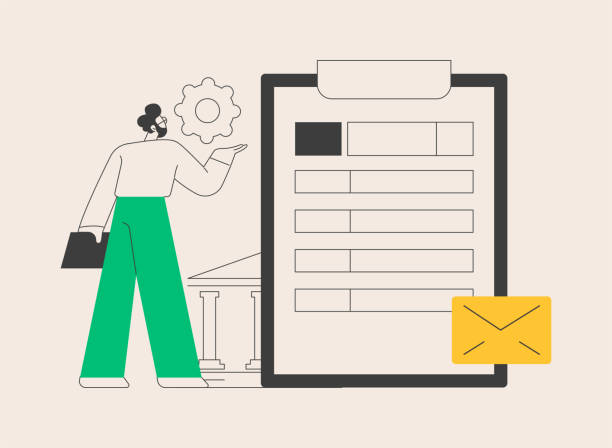
After choosing the platform, it’s time for one of the most crucial aspects of personal website design: User Interface (UI) and User Experience (UX) design.
These two concepts, though related, cover different aspects of design.
UI refers to the look and feel of the website (colors, fonts, layout), while UX deals with the user’s feelings when interacting with the website (ease of use, efficiency, enjoyment). A successful personal website must be both beautiful and functional.
For an effective personal website design, focusing on user-centric UX is crucial.
This means your website should be designed with your audience’s needs and behaviors in mind.
This includes responsive design, which ensures your website displays correctly on any device, from desktops to mobiles and tablets.
High loading speed, easy navigation, and quick access to required information are among the fundamental principles of UX.
Appropriate use of white space, clear visual hierarchy, and distinct calls-to-action significantly improve the user experience.
This specialized and educational section helps you create an attractive and user-friendly website by adhering to these principles, encouraging your audience to stay and explore more.
Making the user experience entertaining can also be achieved by adding subtle animations, high-quality images, and interactive design, which enhances your website’s visual appeal.
Are you tired of your company’s website not meeting your expectations? With Rasaweb, design a professional website that truly represents your business.
✅ Increase attraction of new customers and sales leads
✅ Enhance your brand’s credibility and trust with your audience
⚡ Get a free website design consultation!
Optimizing Personal Website for Search Engines (SEO)

Search Engine Optimization (SEO) plays a vital role in the visibility of your personal website design.
Even if you have the most beautiful and user-friendly website, without proper SEO, it might not be found by your target audience.
SEO is a set of techniques that help search engines like Google understand your website’s content and rank it in search results.
This includes both on-page SEO and off-page SEO.
On-page SEO involves optimizing elements within your website. These actions include using relevant keywords in titles, meta descriptions, and page content, optimizing images (size and alt text), creating a friendly URL structure, and correctly using Heading tags (H1, H2, H3).
Also, website loading speed and responsiveness across different devices are important factors in SEO ranking.
The guidance content in this section highlights the importance of creating appropriate internal links that help users and search engines better understand your website’s structure.
Off-page SEO primarily refers to building backlinks from other reputable websites. The more quality websites that link to your website, the more your credibility and ranking in search results will increase.
Your specialized and high-quality content can naturally attract backlinks.
Finally, regularly reviewing SEO performance using tools like Google Analytics and Google Search Console is crucial for identifying issues and improvement opportunities.
These efforts ensure that your personal website design is not only appealing but also easily discoverable on the web.
Content is King: Content Strategy for Your Personal Website
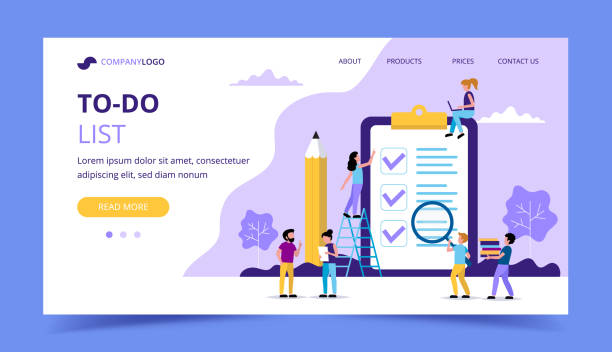
After laying the technical and visual foundations of your personal website design, it’s time for “content,” rightly called king.
A website without engaging and relevant content is like an empty shop window.
Your content strategy should align with your website’s goals and your audience.
Content types can include blog articles, portfolios, testimonials, videos, podcasts, and even online courses.
The main goal is to provide value to visitors and establish meaningful connections with them.
For an impactful personal website design, you should produce content that is both specialized and understandable to your audience.
If your website is a portfolio, provide detailed descriptions for each project and highlight your challenges and solutions.
If it’s a blog, choose topics in which you are an expert and that are appealing to your audience.
Regular and high-quality content publication not only helps improve SEO but also establishes you as an authority in your field.
Entertaining content can also increase your website’s appeal by using storytelling, humor, or creative formats (such as infographics and quizzes).
Thought-provoking content can encourage discussion and interaction on your website, which in turn boosts user engagement.
Remember that every piece of your content should have a clear purpose, whether it’s informing, persuading to action, or simply building a connection.
Personal Website Security and Maintenance: Stability and Protection

Once your personal website design process is complete and the website is online, the next crucial step is ensuring its security and regular maintenance.
Website security is a dynamic issue and requires continuous attention to protect your data and your visitors’ information.
Cyberattacks, malware, and data breaches can severely damage your credibility.
To protect your website, installing an SSL certificate (HTTPS) is the first essential step, which encrypts communication between the user and the website and is also beneficial for SEO.
Furthermore, regularly updating the platform (like WordPress), themes, and plugins is of utmost importance.
Developers constantly release security patches to address vulnerabilities, and neglecting these updates puts your website at risk.
Using strong and unique passwords, enabling two-factor authentication (2FA), and utilizing reputable security plugins provide additional layers of defense.
News content in the field of cybersecurity indicates that threats are constantly evolving, so your awareness and vigilance in this area are crucial.
Regular website backups are also a very important step that allows you to restore your website to its previous state in case of any issues.
This specialized section ensures that your personal website design maintains the necessary stability for continued operation.
The table below shows some key security tips:
| Security/Maintenance Action | Description | Importance |
|---|---|---|
| SSL Certificate Installation | Encrypts communication between user and server; essential for credibility and SEO | Very High |
| Regular Updates | Keeping CMS, themes, and plugins up-to-date to fix vulnerabilities | Very High |
| Backup | Regularly creating a backup copy of the entire website | Very High |
| Strong Passwords | Using complex and unique passwords for all accounts | High |
| Firewall and Malware Scan | Using security tools and plugins to protect against attacks | High |
Promoting and Marketing Your Personal Website: Make Yourself Known to Others
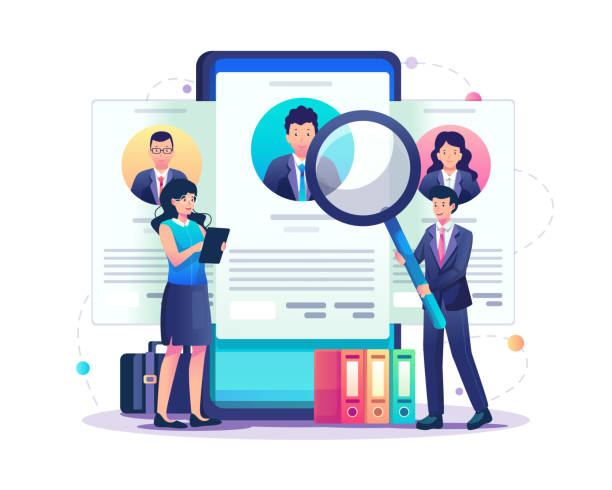
Building and designing a personal website is only half the battle; for your website to achieve its goals, you need to introduce it to your target audience.
Marketing your personal website is as important as the design itself.
There are various marketing strategies you can use to attract more traffic to your website and enhance your personal brand.
One of the most effective methods is content marketing, which was also mentioned in previous chapters.
Consistently producing valuable and high-quality content not only helps with SEO but also establishes you as an expert in your field.
Using social networks is also a powerful tool for marketing your personal website design.
By sharing your website content on platforms like LinkedIn, Instagram, Twitter, or Facebook, you can attract significant referral traffic to your website.
Additionally, participating in online forums related to your field, commenting on others’ blogs (with a link to your website if relevant), and even collaborating with other professionals can help increase your visibility.
A precise analysis of your website’s performance using analytics tools (like Google Analytics) will show you which strategies are most effective and where you need improvement.
The guidance in this section will help you systematically market your personal website in the best possible way and ensure that your efforts in building a personal website have paid off.
Did you know that 85% of customers check your company’s website before any interaction?
With Rasaweb, build a corporate website worthy of your credibility.
✅ Increase customer credibility and trust
✅ Attract quality leads
⚡ Get a free website design consultation!
Case Study of Successful Personal Websites: Lessons to Learn

To complete your knowledge in personal website design, nothing is better than examining successful examples.
Case studies of well-designed and implemented personal websites can teach us valuable lessons.
These lessons go beyond visual aesthetics and include content strategies, user interaction, and how to create a strong personal brand.
For instance, a graphic designer’s personal website might focus on showcasing high-quality visual portfolios and concise storytelling about each project, while a writer’s website might concentrate on regular blogging and building a community of readers.
A precise analysis of these websites shows that their success is often the result of combining several factors: minimalist and user-friendly design, specialized and valuable content, and a personal story that connects with the audience.
For example, many successful personal websites have a very strong “About Me” section that not only states the individual’s resume but also showcases their personality and values.
Thought-provoking content on these websites can include Q&A sections, surveys, or even challenges that invite users to participate.
Examining successful websites teaches us how to best leverage our strengths and turn weaknesses into opportunities.
This entertaining yet educational section will inspire you to improve your personal website creation and help you have a unique and appealing website.
The Future of Personal Website Design: New Trends and Challenges
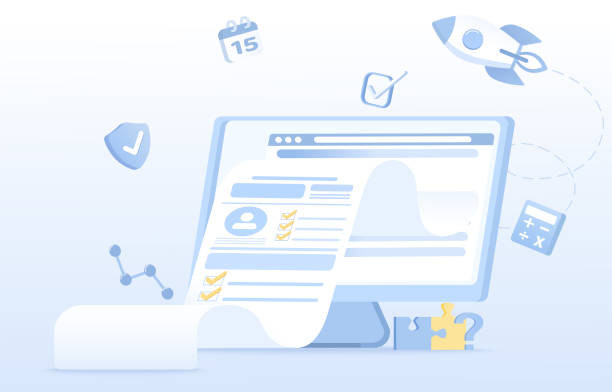
The world of web is constantly changing, and personal website design is no exception.
Awareness of new trends and upcoming challenges helps you prepare your website for the future and stay ahead of your competitors.
One of the most important current trends is the focus on Artificial Intelligence (AI) and Machine Learning in the design process and user experience personalization.
AI tools can assist in content generation, SEO optimization, and even automated design.
Another trend is the increasing importance of voice search and design for wearable devices.
Your website must be ready to respond to these types of interactions.
News and analytical content indicate that personal websites in the future will move more towards an “immersive user experience,” where Virtual Reality (VR) and Augmented Reality (AR) play a more prominent role.
Upcoming challenges include more advanced cybersecurity, data privacy protection (GDPR and similar regulations), and the need for unparalleled speed and performance.
Personal website design in the future will mean building a dynamic and adaptable platform that can keep pace with technological changes and meet the needs of users in diverse digital ecosystems.
This thought-provoking content invites you to consider new horizons for your dedicated website.
Frequently Asked Questions
| Question | Answer |
|---|---|
| What is a personal website? | A personal website is an online platform that an individual creates to display their information, resume, portfolio, interests, or ideas. This website serves as a digital business card and a place for personal branding. |
| Why do I need a personal website? | Having a personal website helps you establish a professional online presence, showcase your skills and experiences, connect with your audience, find new career opportunities, and increase your personal credibility. |
| What content should I include on my personal website? | Typical content includes: About Me page (biography, education, experiences), resume, portfolio (projects, articles, designs), blog (posts, insights), and contact information. |
| What are the basic steps to create a personal website? | The steps include: 1. Defining goal and audience 2. Choosing a domain name 3. Selecting hosting 4. Choosing a platform (e.g., WordPress or coding) 5. Designing and structuring 6. Content creation 7. SEO and optimization 8. Launch and maintenance. |
| Should I use a Website Builder or code it myself? | If you don’t have coding knowledge or are looking for a quick solution, website builders (like Wix, Squarespace) or CMSs (like WordPress) are good options. If you want full control and high flexibility and have technical knowledge, coding is the best approach. |
| How important is design (appearance) for a personal website? | Website design is very important. A beautiful, user-friendly, and professional design ensures visitors have a good experience, stay longer on the site, and take your personal brand seriously. Poor design can have a negative impact. |
| What is Responsive Design and why is it important? | Responsive design means designing a website whose appearance and functionality automatically adapt to the screen size of the user’s device (desktop, tablet, mobile). This feature is crucial for ensuring a good user experience across all devices. |
| How can I choose a good domain name for my personal website? | A domain name should be relevant to your identity (usually your first and last name), short and memorable, easy to pronounce, and avoid too many numbers or hyphens. Common extensions like .com or .ir are usually preferred. |
| What is Web Hosting? | Web hosting is space on an internet-connected server that stores your website files (such as code, images, videos) and makes it accessible to users 24/7. Without hosting, your website would not be accessible. |
| How can I promote my personal website? | You can use social media, search engine optimization (SEO), content marketing (blogging), sharing links in your email signature, and networking with others in your field to promote your website. |
And other services of Rasaweb Advertising Agency in the field of advertising
Smart SEO: A specialized service for growth in customer behavior analysis based on intelligent data analysis.
Smart Digital Advertising: A novel service for increasing website traffic through SEO-driven content strategy.
Smart Website Development: A novel service for increasing customer acquisition through marketing automation.
Smart Advertising Campaign: Professional optimization for increasing website traffic using user experience customization.
Smart Social Media: A creative platform for improving customer behavior analysis with custom programming.
And over a hundred other services in the field of internet advertising, advertising consultation, and organizational solutions
Internet Advertising | Advertising Strategy | Advertorials
Resources
Comprehensive Guide to Personal Site DesignEffective Online Presence StrategyBuilding a Personal Site with WordPressSEO for Personal Website
? For a powerful presence in the digital world and sustainable growth for your business, Rasaweb Afarin Digital Marketing Agency is your reliable partner, offering services such as WordPress website design, SEO, and social media management.
📍 Tehran, Mirdamad Street, next to Bank Markazi, Southern Kazeroon Alley, Ramin Alley, No. 6

